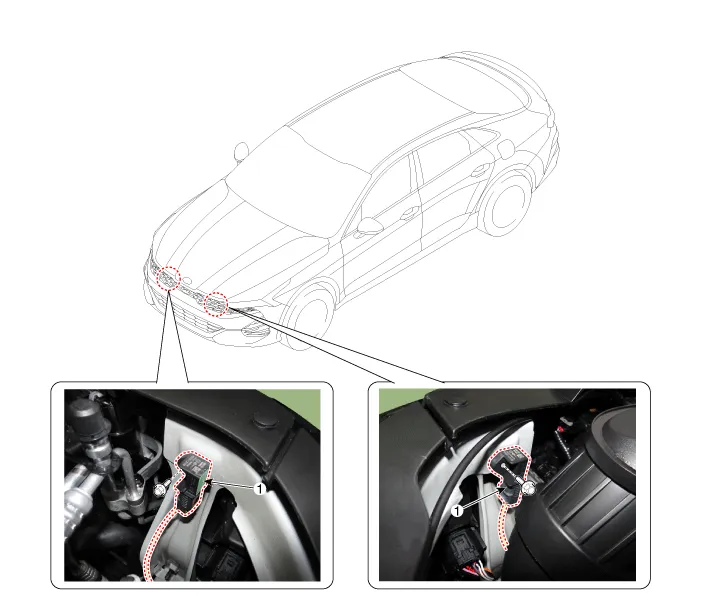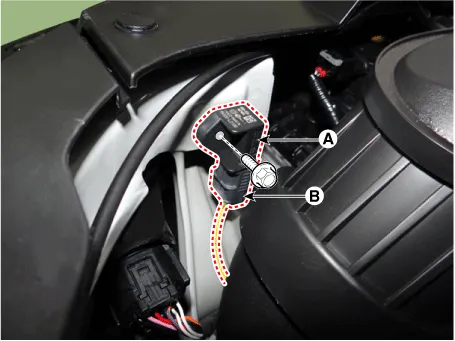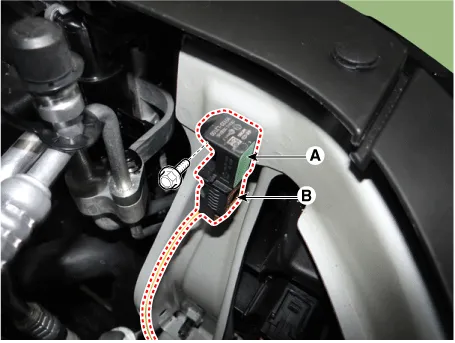Kia Optima DL3: SRSCM / Front Impact Sensor (FIS)
Description and operation
| Description |
The front impact sensor (FIS) is installed in the Front End Module (FEM). They are remote sensors that detect acceleration due to a collision at its mounting location. The primary purpose of the Front Impact Sensor (FIS) is to provide an indication of a collision. The Front Impact Sensor (FIS) sends acceleration data to the SRSCM.
Components and components location
| Components Location |

| 1. Front impact sensor (FIS)
|
Repair procedures
| Removal |
| 1. |
Disconnect the negative battery terminal.
|
| 2. |
Remove the front impact sensor (A) by loosening the bolt after disconnecting the connector (B).
[LH]
[RH]
|
| Installation |
|
| 1. |
Install a new front impact sensor. |
| 2. |
Tighten the front impact sensor mounting bolt.
|
| 3. |
Connect the front impact sensor connector. |
| 4. |
Install the radiator assembly. |
| 5. |
Reconnect the battery negative cable. |
| 6. |
After installing the front impact sensor, confirm proper system operation : Turn the ignition switch ON; the SRS indicator light should turn on for about six seconds and then go off. |
Description and operation Description The primary purpose of the SRSCM (Supplemental Restraints System Control Module) is to discriminate between an event that warrants restraint system deployment and an event that does not.
Description and operation Description The Side Impact Sensor (SIS) system consists of two kinds of side impact sensor which are installed at each center of the front door module (left and right) and two rear sensors which are installed in the rear pillar (left and right).
Other information:
Kia Optima DL3 2019-2025 Service and Repair Manual: Rear Combination Lamp
Components and components location Component Location 1. Tail lamp 2. Stop lamp 3. Tail/Stop lamp 4. Back up lamp 5. Turn signal lamp Schematic diagrams Connector and Terminal Function [A Type] Pin Function Center Ou
Kia Optima DL3 2019-2025 Service and Repair Manual: Panorama Sunroof Motor
Schematic diagrams Connector and Terminal Function Repair procedures Inspection 1. Disconnect the negative battery terminal. 2. Remove the rear pillar trim [LH]. (Refer to Body - "Rear Pillar Trim") 3.
Categories
- Manuals Home
- Kia Optima Owners Manual
- Kia Optima Service Manual
- Emission Control System
- Power Train
- Driving your vehicle
- New on site
- Most important about car



